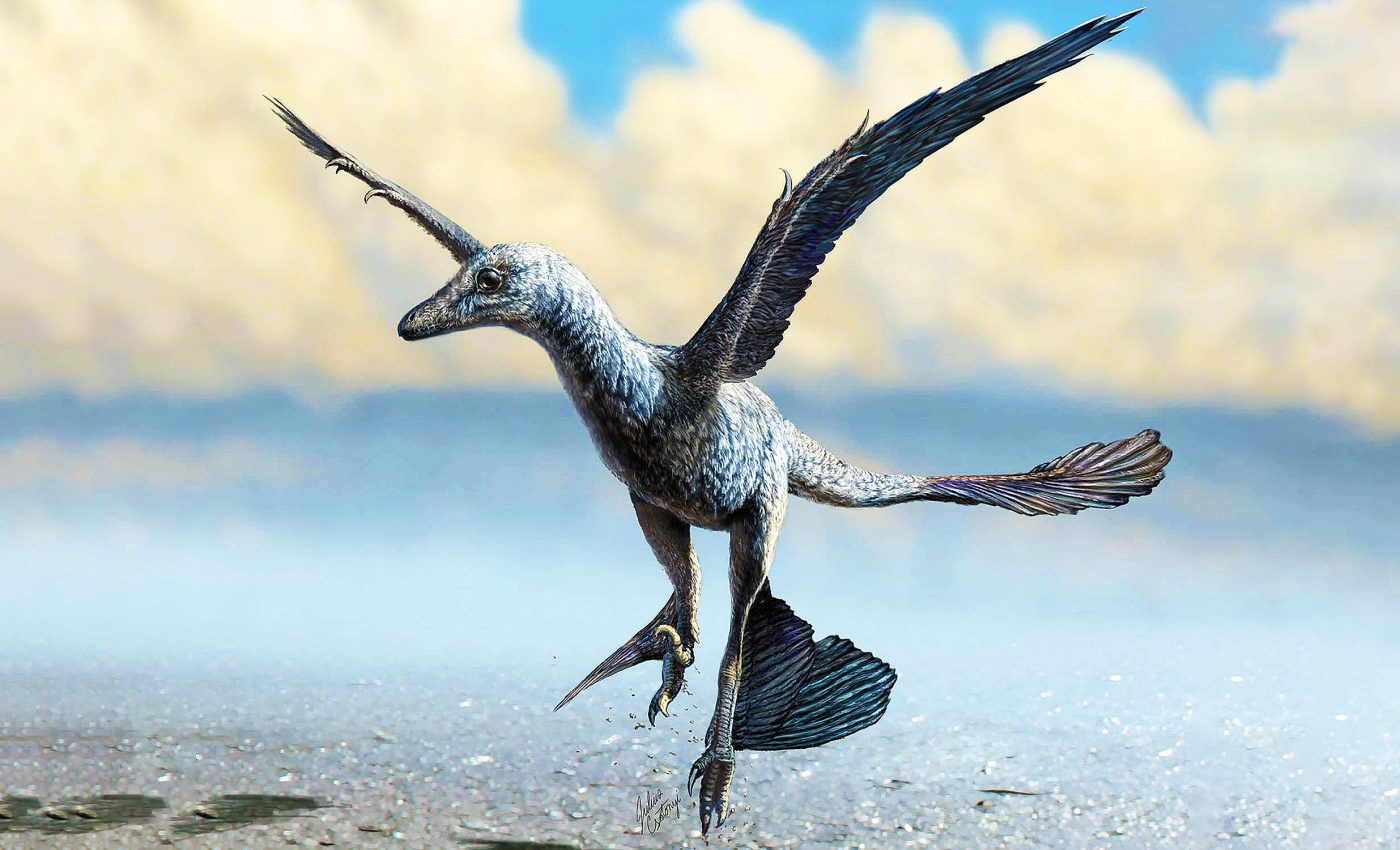
Feathered dinosaurs used wings to run, not fly, in what's now called 'flap-running'
Recent research into how dinosaurs managed to run on their massive body frames has helped scientists gain a better understanding of how the act of “running” evolved in animals over time.
Let’s travel back 106 million years, to a time when small, feathered dinosaurs roamed the Earth. This new study suggests that these little creatures were pulling off some impressive stunts using their wings, even without the capability to fly.
The research team focused on a fossil trackway found in South Korea. This preserved slice of history belonged to a dinosaur the size of a sparrow.
What makes this prehistoric path so interesting is how it demonstrates the dinosaur used a unique “flap-running” technique to achieve impressive speeds.
What is this “flap-running”? Imagine the quick scuttle and fluttering of a domestic fowl. Except, picture this taking place millions of years ago in a dinosaur about the size of your hand!
Dinosaurs flap-running with wings
These findings challenge the traditional view of evolution. Previously, it was thought that flight evolved in a linear process, from gliding to powered flight.
This new discovery highlights the complexity and adaptability of bird ancestors, demonstrating that wing usage played a crucial role in locomotion before the actual evolution of flight.
Moreover, the findings also enrich our understanding of extinct species’ biomechanics and their transition from ground-dwelling to flight-capable creatures.
Unique locomotion
“With this new find, we’ve demonstrated these really tiny, feathered dinosaurs were using their wings for a kind of locomotion only seen in birds today,” said McGill University Biology Professor Hans Larsson.
It seems these ancient creatures were up to something innovative that modern birds have carried forward into the present.
The study was spearheaded by Alex Dececchi at Dakota State University in the United States and Michael Pittman at The Chinese University of Hong Kong (CUHK)’s School of Life Sciences.
Together, with a team of researchers from South Korea and the U.S., they have given us a fascinating glimpse into the past.
Dinosaurs flap-running
The revelation of flap-running provides a nuanced understanding of the evolutionary trajectory of avian flight.
It suggests that flight did not emerge from a straightforward set of innovations but through a series of complex adaptations.
The ability to flap-run would have offered these tiny theropods a survival advantage, enabling rapid escape from predators and efficient movement across varied terrains.
In this context, the evolutionary path appears to be more of a branching process with multiple explorations, highlighting the adaptability and resourcefulness of these prehistoric creatures in an ever-changing environment.
This discovery invites further exploration into the transitional forms and intermediary behaviors that punctuated the rise of avian flight.
Modern avian flight
The study’s insights extend beyond paleontological curiosity, offering implications for modern avian flight mechanics.
Understanding how these ancient winged dinosaurs utilized their wings not only informs us about their evolutionary past but also potentially reveals aspects of contemporary bird flight we may not fully grasp.

Modern birds, from songbirds to raptors, exhibit a range of flight techniques and efficiencies that could trace their origins back to these primal movements.
By studying these ancestral techniques, scientists can gain a more comprehensive understanding of avian physiology and biomechanics, ultimately enriching our knowledge of biodiversity and the intricacies of life on our planet.
Insights from fossil trackways
Examining fossilized trackways offers a unique window into understanding the locomotive behaviors of ancient creatures.
The specific trackway discovered in South Korea not only illuminates the movement strategies of these small theropods but also sheds light on the environments they inhabited.
By analyzing the substrate and patterns of the preserved footprints, scientists can infer details about the gait and speed of these feathered dinosaurs.
Such insights help reconstruct ecological contexts, indicating whether these dinosaurs traversed swampy landscapes, forested areas, or open plains.
This broader environmental understanding is critical in piecing together the intricate puzzle of prehistoric ecosystems and their dynamic interactions.
Learning from flap-running of dinosaurs
The revelation of flap-running in small theropods prompts a reevaluation of other similar adaptations in the paleobiological record.
This research underscores the importance of revisiting fossil evidence with a fresh perspective, as even minute details can revolutionize our understanding of evolutionary processes.
Furthermore, these findings highlight the interconnectedness of survival strategies across different species, suggesting that analogous adaptations may have arisen independently in various lineages.
The implication is a call for interdisciplinary collaboration to explore these complex evolutionary narratives, integrating paleontology, biomechanics, and environmental science to unravel life’s historical tapestry.
Through such a comprehensive approach, we can better appreciate the diversity and ingenuity present in the natural world both in ancient times and today.
What’s next?
This research opens up a new avenue of inquiry about the origins of bird flight. It is a clear illustration that evolution isn’t always a straightforward process, and complex adaptations can occur, even in the tiniest of creatures.
Indeed, the journey of a thousand miles (or in this case, millions of years) starts with just a single step. Or perhaps, a fascinating flap-run!
The study is published in the journal The Proceedings of the National Academy of Sciences (PNAS).
—–
Like what you read? Subscribe to our newsletter for engaging articles, exclusive content, and the latest updates.
Check us out on EarthSnap, a free app brought to you by Eric Ralls and Earth.com.
—–













